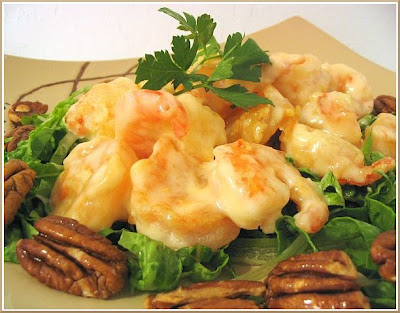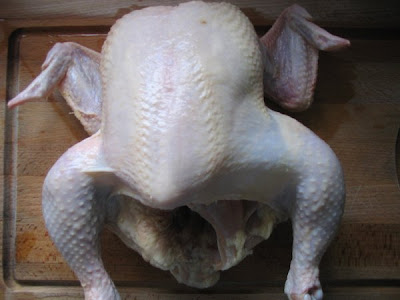I look forward to a stale brioche as much as a fresh-from-the-oven loaf. In fact, I specifically set aside a portion of my last brioche and eagerly waited for it to dry out. Why? Because stale brioche makes the absolute best French toast and bread pudding. The day had finally arrived, and I was gathering ingredients for French toast when I spotted the jar of Nutella sitting innocently on the pantry shelf. “Eureka!” I knew I wouldn't be making any French toast but Nutella stuffed French toast! A luscious layer of Nutella is sandwiched between two slices of brioche, then the whole thing was to be dipped in French toast batter, fried in butter, and finished with a dusting of powdered sugar. It sounded so divine the prospect of making it led me to hum and prance excitedly around the kitchen. And the taste? Well, brioche and Nutella were made for each other. It made my heart flutter with happiness (or was that my heart struggling to pump after all that artery clogging goodness?), it was no doubt the best French toast I have ever had with a crisp exterior and a soft, custard like interior.
This will be my entry for Leftover Tuesdays hosted by Foodie Project
Notes:
- The batter recipe will also work for regular French toast, just cut the brioche slices 3/4-in thick instead of 3/8in thick.
- I kept the flavorings to a minimum because the brioche was already scented with lavender but if you're using a plain brioche, you can try variations such as adding cinnamon, nutmeg, or swap the vanilla extract with almond extract
Nutella Stuffed Brioche French Toast
Adapted from Cook's Illustrated
1 egg
3/4 C milk
3 Tbsp AP flour
1 Tbsp unsalted butter, melted (and more for frying)
1 Tbsp granulated sugar
2 tsp vanilla extract
Pinch of salt
Half loaf of brioche; cut into 8 3/8-in slices
Nutella, a few tablespoons
Powdered sugar for serving
Whisk the egg, milk, melted butter, flour, sugar, salt, and vanilla together until a smooth, thin batter is formed.
Spread some Nutella on half of the brioche slices and then top with a second slice of brioche, forming 4 Nutella brioche sandwiches about 3/4-in thick.
Add a tablespoon of butter to a nonstick skillet over medium heat.
To ensure even soaking of the bread, pour only half of the batter into a flat dish and soak both sides of 2 brioche pieces. You may not use up all of the batter but this way you don’t oversoak the first two bread pieces, leaving you with not enough batter for the second two pieces.
Once you have soaked the first two slices, remove and start frying them. Pour the remaining half of the batter into the dish and soak the next two pieces of bread.
Fry the French toasts until crisp and brown, about 1 1/2 to 2 minutes on the first side, flip then fry the second side until crisp and brown also, another minute or so.
Serve with powdered sugar.
~~~
Brioche French Toast
1 egg
3/4 C milk
3 Tbsp AP flour
1 Tbsp unsalted butter, melted (and more for frying)
1 Tbsp granulated sugar
2 tsp vanilla extract
Pinch of salt
Half loaf of brioche; cut into 4 3/4-in slices
Variations: Add cinnamon, nutmeg, or swap almond extract for vanilla extract
Whisk the egg, milk, melted butter, flour, sugar, salt, and vanilla together until a smooth, thin batter is formed.
Add a tablespoon of butter to a nonstick skillet over medium heat.
To ensure even soaking of the bread, pour only half of the batter into a flat dish and soak both sides of 2 brioche pieces. You may not use up all of the batter but this way you don’t oversoak the first two bread pieces, leaving you with not enough batter for the second two pieces.
Once you have soaked the first two slices, remove and start frying them. Pour the remaining half of the batter into the dish and soak the next two pieces of bread.
Fry the French toasts until crisp and brown, about 1 1/2 to 2 minutes on the first side, flip then fry the second side until crisp and brown also, another minute or so.
Serve with powdered sugar.








































